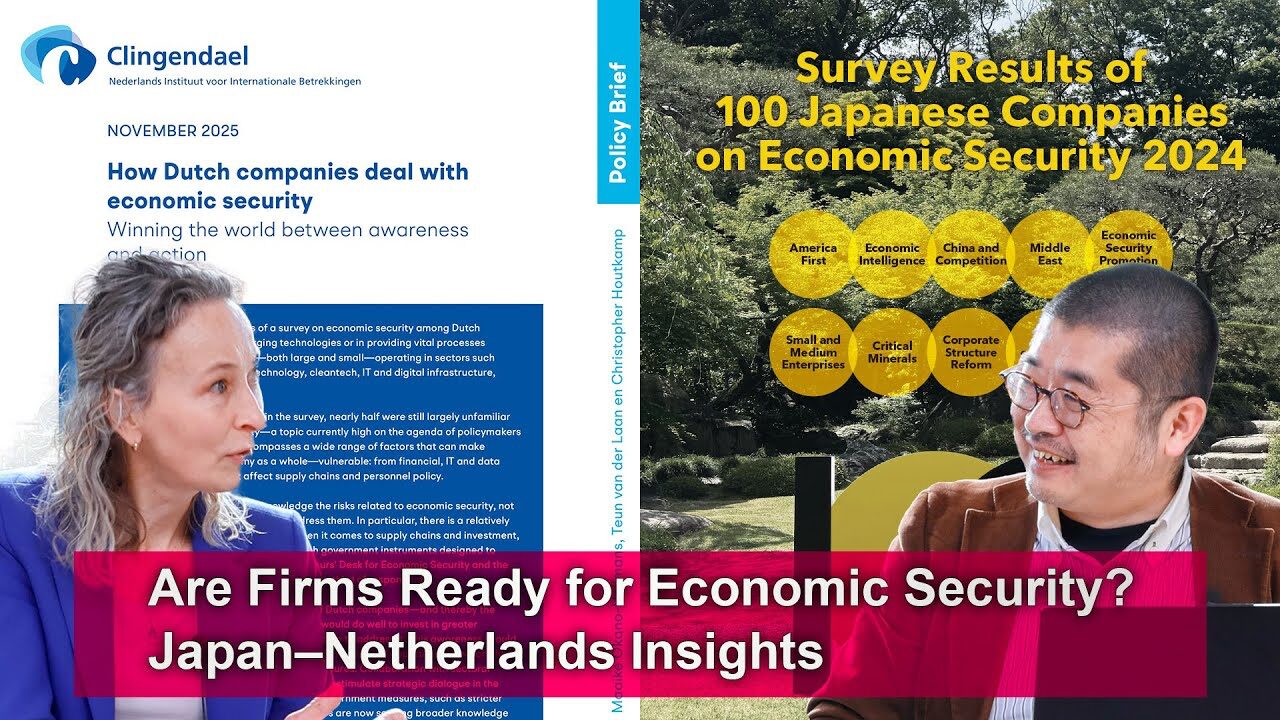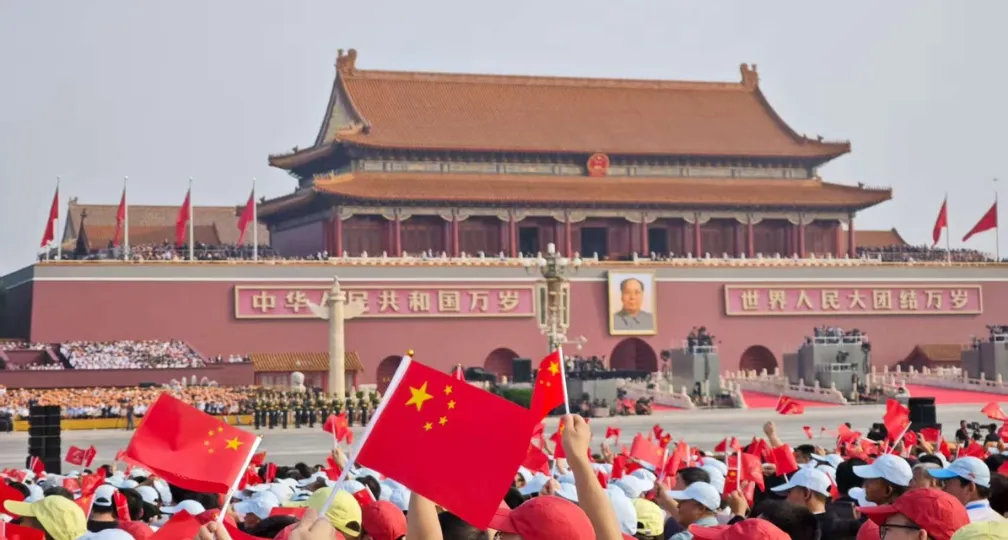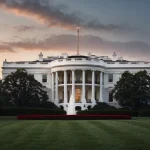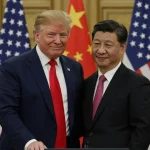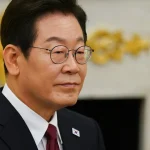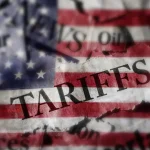IOG Economic Intelligence Report (Vol. 4 No. 3)
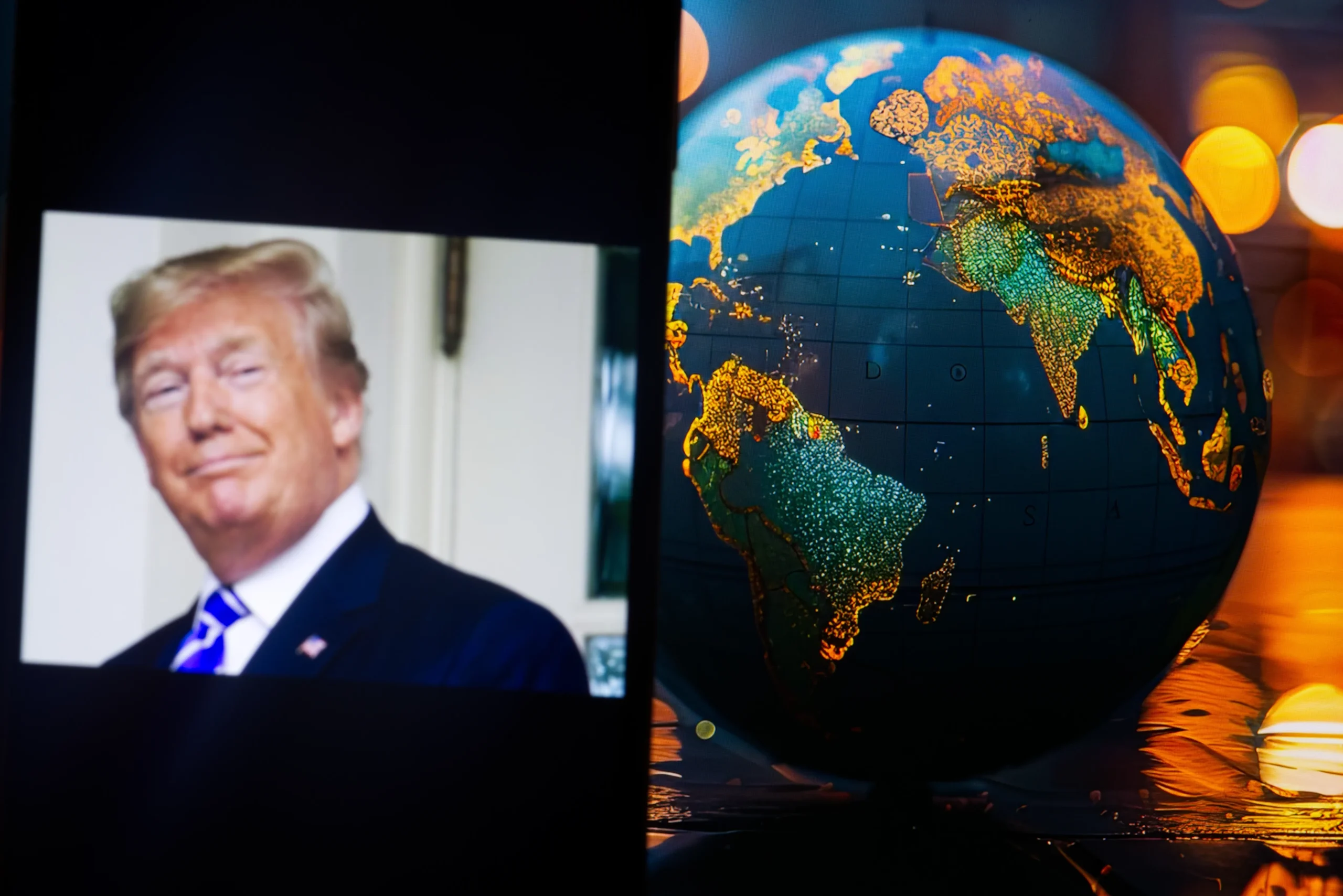
The latest regulatory developments on economic security & geoeconomics
By Paul Nadeau, Visiting Research Fellow, Institute of Geoeconomics (IOG)
Trade War False Start, Part 1: Trump backed off a plan to impose 50 percent imports on Colombia in response to the country’s rejection of a flight of detained Colombian migrants. The White House withdrew the threat a few hours later and announced in a press release that “The Government of Colombia has agreed to all of President Trump’s terms”.
Trade War False Start, Part 2: On February 1, Donald Trump announced tariffs of 25 percent on goods from Canada and Mexico (with a 10 percent tariff on energy imports from Canada) and 10 percent on goods from China, in all covering 45 percent of U.S. total imports, but paused implementation of the tariffs for 30 days on February 3 following commitments from Canada and Mexico to address security on their respective borders. The 10 percent tariffs on China went into effect on midnight February 4, at which point China immediately announced retaliatory tariffs of 15 percent for U.S. coal and LNG and 10 percent for crude oil, farm equipment and some automobiles which go into effect on February 10.
Trump’s order would also close the “de minimis” threshold which allows packages of less than $800 in value to be shipped into the United States duty-free. Before the pause, Canada’s Prime Minister Justin Trudeau said that Canada would retaliate with 25 percent tariffs on $106 billion of U.S. goods and Mexico had pledged similar retaliation. China announced that it would respond to Trump’s 10 percent tariffs with a case at the World Trade Organization, as well as “necessary countermeasures” to protect its interests.
Trump invoked the International Economic Emergency Powers Act of 1974 (IEEPA) which grants the president authority to use economic countermeasures in response to a national emergency and allows the president to bypass Congress and the dispute settlement procedures in the U.S.-Canada-Mexico Agreement (USMCA). Trump announced that the tariffs would be kept in place until the three countries address the flow of fentanyl and illegal migrants into the United States, but did not offer specific parameters to that effect.
The economic impact is expected to be significant if implemented given the tight integration of the North American economies and supply chains that cross borders. The automative industry is expected to be particularly impacted, and economists have suggested that the tariffs would reduce U.S. GDP by 1.5 percent while throwing Canada and Mexico into a recession.
USTR Scrutinizes PRC: The Office of the U.S. Trade Representative launched investigations into possible unfair trade practices by China and into whether China followed through on its commitments in the 2019 “Phase One” agreement with the United States. The first investigation could lead to Section 301 tariffs on China (implemented in response to unfair trade practices by foreign partners) and other possible retaliatory measures.
Trump Designates Cartels as Terrorist Organizations: Trump signed an executive order on January 20 designating certain international drug cartels as Foreign Terrorist Organizations or Specially Designated Global Terrorists. The order calls for “the United States to ensure the total elimination of these organizations’ presence in the United States and their ability to threaten the territory, safety, and security of the United States through their extraterritorial command-and-control structures” and calls on the Secretary of State, in consultation with the Treasury Secretary, Attorney General, Secretary of Homeland Security, and Director of National Intelligence to provide recommendations in 14 days.
EU Extends Russia Sanctions: The European Union extended its sanctions program against Russia for a further six months, overcoming Hungary’s opposition. The sanctions include a ban on the import or transfer of seaborne crude oil or similar products from Russia to the EU, along with other sanctions on trade, finance, energy, technology, industry, transport and luxury goods. Hungary objected to the package, asking the EU to intervene in a gas dispute between Hungary and Ukraine.
Japan Tightens Tech Export Controls: Japan revised its foreign exchange law to include export controls to include advanced chips and lithography equipment and cryocoolers which are needed to developing quantum computing technologies. Companies that export these items will need a license to prevent the use of these technologies in weapons and weapon development. The new rules will come into effect in May 2025. Japan also added 42 new entities to its “entity list” of foreign companies and organizations that would be subject to export oversight on any dual-use items effective February 5.
Japan Introduces Rules to Vet Foreign Firms: Japan’s Ministry of Finance introduced new rules to vet investments by foreign firms with possible links to foreign governments to address concerns that such firms may gather intelligence or sensitive data. The rules are a response to China’s 2017 National Intelligence Law which obligated individuals and firms to cooperate with China’s government on intelligence activities. The new rule will require prior notification from all foreign investors that might cooperate with foreign governments in collecting intelligence and will be triggered once a foreign firm acquires more than 1 percent of a Japanese firmed deemed key to Japan’s national security.
Did DeepSeek Bypass Export Controls? The White House and Federal Bureau of Investigation (FBI) are investigating whether China’s DeepSeek AI firm bypassed export controls to purchase Nvidia chips from third-party intermediaries in Singapore. While DeepSeek has not identified the semiconductors used to develop its models, experts believe it used the Nvidia H800, a chip designed by Nvidia for China’s market following the announcement of U.S. export controls of advanced semiconductor manufacturing equipment in October 2022.
Staff Moves: William Kimmitt, a partner at the Kirkland & Ellis law firm and councilor to U.S. Trade Representative Robert Lighthizer in the first Trump administration, is set to be nominated to be undersecretary for trade in the Commerce Department. Jeffrey Kessler, a partner at the law firm WilmerHale and assistant secretary for enforcement and compliance during the first Trump administration, is set to lead the Commerce Department’s Bureau of Industry and Security (BIS).
Trump, trade, and the purpose of tariffs
By Andrew Capistrano, Visiting Research Fellow, Institute of Geoeconomics (IOG)
Donald Trump’s favorite word is “tariffs”, so his return the White House has been accompanied by their return as a key foreign policy instrument. The 48-hour drama following Trump’s imposition of 25 percent tariffs on all Canadian and Mexican imports, and 10 percent on all goods from China, confirmed this to the world. Although Trump delayed the tariffs on his North American neighbors for 30 days, following talks with Canadian Prime Minister Justin Trudeau and Mexican President Claudia Sheinbaum, China retaliated against US energy exports once they went into effect on 4 February. This means the US remains involved in trade spats with its top three trading partners.
More immediately, however, the episode has raised questions about the ultimate purpose of the tariffs, largely because Trump has given conflicting statements regarding what he aims to accomplish. So far, three very different rationales for tariffs have been provided.
First, Trump obviously uses tariffs to create leverage in pursuing “the art of the deal”. It is important to note that his initial tariff threats have been used to advance one of the new administration’s central domestic objectives: to secure the US borders and return illegal migrants to their home countries. Therefore, when the Colombian president balked at allowing US military flights to return deported migrants, Trump issued a threat that included 50 percent tariffs on Colombian goods, causing him to back down. Similarly, Trump used his authority under the International Economic Emergency Powers Act (IEEPA) to impose tariffs on Canada, Mexico, and China, which was only possible because he declared a “border emergency” after taking office. Trudeau and Sheinbaum’s agreement to help secure their borders with the US and combat fentanyl trafficking was the stated concession that led to the 30-day pause, allowing Trump to retain the tariff threat without suffering the immediate economic consequences of a North American trade war.
Trump also used tariff threats as a bargaining tactic during his first term. But the use of IEEPA authority to levy across-the-board tariffs is a new maneuver, tying trade policy to his declared border emergency. At the same time, despite using this legal justification, Trump cited the “unfairness” of the targets’ trade deficits with the US nearly as often as illegal immigration or fentanyl when discussing the tariffs with reporters. This begs the question of whether he ultimately seeks to use the delayed tariffs as leverage to not only secure the border, but also renegotiate the US-Mexico-Canada (USMCA) trade agreement. Regardless, it is more than likely that Trump will demand some further concessions in exchange for withholding the tariffs past the one-month reprieve.
The second, and more bipartisan, rationale for tariffs is that they can be used to incentivize manufacturers to produce more goods domestically. When it comes to critical industrial sectors like pharmaceuticals, semiconductor manufacturing, and metals such as steel or aluminum, Trump has indicated that he prefers combining tariffs with low taxes and reduced regulations to make American industries competitive as well as court foreign investment. But this goal, while popular with American workers, appears inconsistent with using tariffs purely as a bargaining instrument.
Unlike the recent threats issued under IEEPA authority, US manufacturing needs to be supported by higher, long-term, and strategically targeted tariff measures—perhaps enacted through Congressional legislation. Still, during his first term, Trump attempted to combine his aim of protecting manufacturing with his penchant for using tariffs to obtain leverage. This included imposing tariffs under Section 232 of the Trade Expansion Act of 1962, which gives the president authority to restrict imports that are assessed to harm critical domestic industries, cause over-reliance on foreign suppliers for key materials, or weaken US defense readiness and economic security. Trump also used Section 301 of the Trade Act of 1974 to impose tariffs on China for unfair trade practices, Section 201 of the same Act to protect manufacturers from import surges due to overcapacity concerns, and Section 337 of the Tariff Act of 1930 to block counterfeit goods and those that infringed on US intellectual property. With respect to China, these tariffs led to retaliation, setting the stage for the Phase One trade deal. And although most of the tariffs have been left in place by the Biden administration, they have only had a muted effect on reviving US manufacturing. If Trump aims to restore America’s industrial capacity, trade policy alone will be insufficient, and may require tariffs exceeding 100 percent for key sectors.
Trump’s third rationale for tariffs is the potentially most radical: to replace or at least augment income taxes as a source for government revenue. The idea of setting up an External Revenue Service (ERS) alongside the Internal Revenue Service (IRS) has been put forward as a way to justify tax cuts without reducing liabilities, and fits into Trump’s wider goal of governmental reform. For instance, he has repeatedly cited the fact that throughout the 19th century the US had high tariffs and no income tax, leading to an industrial renaissance. Mainstream economists are skeptical that tariffs could realistically replace tax revenues, or if they would have their 19th century effectiveness given a US economy now at the industrial frontier and with deep capital markets. Yet if Trump went through with his threat to impose a baseline 10 percent tariff on all imports and an additional 50 percent on Chinese goods, this would raise over $600 billion annually (based on 2023 trade volume). Of course, such calculations are only theoretical and do not take into account the second-order economic consequences of blanket tariff policy.
On the surface, these three rationales appear contradictory. Tariffs as bargaining chips are by definition intended to be short term and therefore inconsistent with either supporting re-industrialization or raising significant revenues. And across-the-board tariffs to bring funds into the ERS would likely lead trade partners to further devalue their currencies, strengthening the dollar and making US exports less competitive. There is also the persistent problem of US inflation, which voters elected Trump to reduce. If demand is inelastic, prices on tariffed goods will rise for consumers, and Trump may find himself under political pressure to change course before manufacturers can revamp domestic production.
Nevertheless, the framework does have some internal coherence. The effectiveness of tariffs as leverage increases proportionally to the target country’s level of dependence on the US market. Because exports to the US accounted for 26.4 percent of Mexican GDP and 20.5 percent of Canadian GDP (as of 2023), Trump does possess significant leverage—the US can hold out longer in a potential “trade war of attrition” with its two largest trading partners. On the other hand, America’s third largest trading partner, China, only derives 2.8 percent of its GDP from exports to the US. The fact that Trump only imposed 10 percent tariffs on China could suggest a recognition of his relative lack of leverage, and despite China’s central role in fentanyl production, these tariffs may be intended to be more permanent, representing the first move in a larger US strategy to implement the Phase One trade deal or even push for further trade negotiations. In this context, the removal of the de minimis exception on imports valued at $800 or less severely impacts the business models for Chinese e-retailers Shein and Temu, which gained US market share with their cheap, un-tariffed products.
For tariffs to be used as leverage against China (or the EU, which may soon also face 10 percent tariffs), Trump will need his threats to be credible. It is true that in the current global economy, China or the EU will be unable to find a replacement for US demand to absorb their production, but since they can hold out longer, he cannot expect to simply cut quick deals like he did with Colombia, Canada, or Mexico. These 10 percent tariffs may be designed to provide leverage, while also leaving open a fallback rationale of protecting US industries or raising revenues if Trump cannot reach a satisfactory bargain with Beijing or Brussels.
Meanwhile, the uncertainty generated by the 48-hour “trade war” with Canada and Mexico gave markets an opportunity to price in the risks, somewhat reducing the negative consequences for future Trump-initiated trade frictions. In this way, there is a possibility that the Canada and Mexico tariff threats were a preparatory maneuver before turning serious trade policy toward China and Europe. Since trade balances systemically, not bilaterally, a united North America would be far more effective at challenging China’s overcapacity than the US alone, although it is unclear whether Trump appreciates this point.
The bottom line is that it would be a mistake to underestimate Trump; one should not interpret the deals he made with Canada and Mexico as evidence that all his tariff threats will merely be bluffs. For the new administration, trade policy will be inseparable from foreign policy and may even support fiscal policy. Two weeks in, “Tariff Man” is just getting started.
(Photo Credit: Shutterstock)
Disclaimer: The views expressed in this IOG Economic Intelligence Report do not necessarily reflect
those of the API, the Institute of Geoeconomics (IOG) or any other organizations to which the author belongs.
API/IOG English Newsletter
Edited by Paul Nadeau, the newsletter will monthly keep up to date on geoeconomic agenda, IOG Intelligencce report, geoeconomics briefings, IOG geoeconomic insights, new publications, events, research activities, media coverage, and more.



Visiting Research Fellow
Andrew Capistrano is Director of Research at PTB Global Advisors, a Washington DC-based geopolitical risk consulting firm. Specializing in economic competition between the US/EU and China, he analyzes how trade, national security, and industrial policies impact markets, and his firm’s clients include Japanese corporations and government agencies. He previously worked in Tokyo at the US Embassy’s American Center Japan and as a research associate at the Rebuild Japan Initiative Foundation / Asia-Pacific Initiative. Dr Capistrano holds a BA from the University of California, Berkeley; an MA in political science (international relations and political economy) from Waseda University; and a PhD in international history from the London School of Economics. His academic work focuses on the diplomatic history of East Asia from the mid-19th to the mid-20th centuries, applying game-theoretic concepts to show how China's economic treaties with the foreign powers created unique bargaining dynamics and cooperation problems. During his doctoral studies he was a research student affiliate at the Suntory and Toyota International Centres for Economics and Related Disciplines (STICERD) in London.
View Profile
Visiting Research Fellow
Paul Nadeau is an adjunct assistant professor at Temple University's Japan campus, co-founder & editor of Tokyo Review, and an adjunct fellow with the Scholl Chair in International Business at the Center for Strategic and International Studies (CSIS). He was previously a private secretary with the Japanese Diet and as a member of the foreign affairs and trade staff of Senator Olympia Snowe. He holds a B.A. from the George Washington University, an M.A. in law and diplomacy from the Fletcher School at Tufts University, and a PhD from the University of Tokyo's Graduate School of Public Policy. His research focuses on the intersection of domestic and international politics, with specific focuses on political partisanship and international trade policy. His commentary has appeared on BBC News, New York Times, Nikkei Asian Review, Japan Times, and more.
View Profile-
 China, Rare Earths and ‘Weaponized Interdependence’2025.12.23
China, Rare Earths and ‘Weaponized Interdependence’2025.12.23 -
 Are Firms Ready for Economic Security? Insights from Japan and the Netherlands2025.12.22
Are Firms Ready for Economic Security? Insights from Japan and the Netherlands2025.12.22 -
 Is China Guardian of the ‘Postwar International Order’?2025.12.17
Is China Guardian of the ‘Postwar International Order’?2025.12.17 -
 Japan-India Defense in a Fragmenting Indo-Pacific2025.12.10
Japan-India Defense in a Fragmenting Indo-Pacific2025.12.10 -
 The “Economic Security is National Security” Strategy2025.12.09
The “Economic Security is National Security” Strategy2025.12.09
 Event Report: The Trump Tariffs and Their Impact on the Japanese Economy2025.11.25
Event Report: The Trump Tariffs and Their Impact on the Japanese Economy2025.11.25 The “Economic Security is National Security” Strategy2025.12.09
The “Economic Security is National Security” Strategy2025.12.09 The Real Significance of Trump’s Asia Trip2025.11.14
The Real Significance of Trump’s Asia Trip2025.11.14 The long road to a South Korea-U.S. trade deal2025.11.26
The long road to a South Korea-U.S. trade deal2025.11.26 Trump’s Tariffs Might Be Here to Stay – No Matter Who’s in Power2025.11.28
Trump’s Tariffs Might Be Here to Stay – No Matter Who’s in Power2025.11.28



